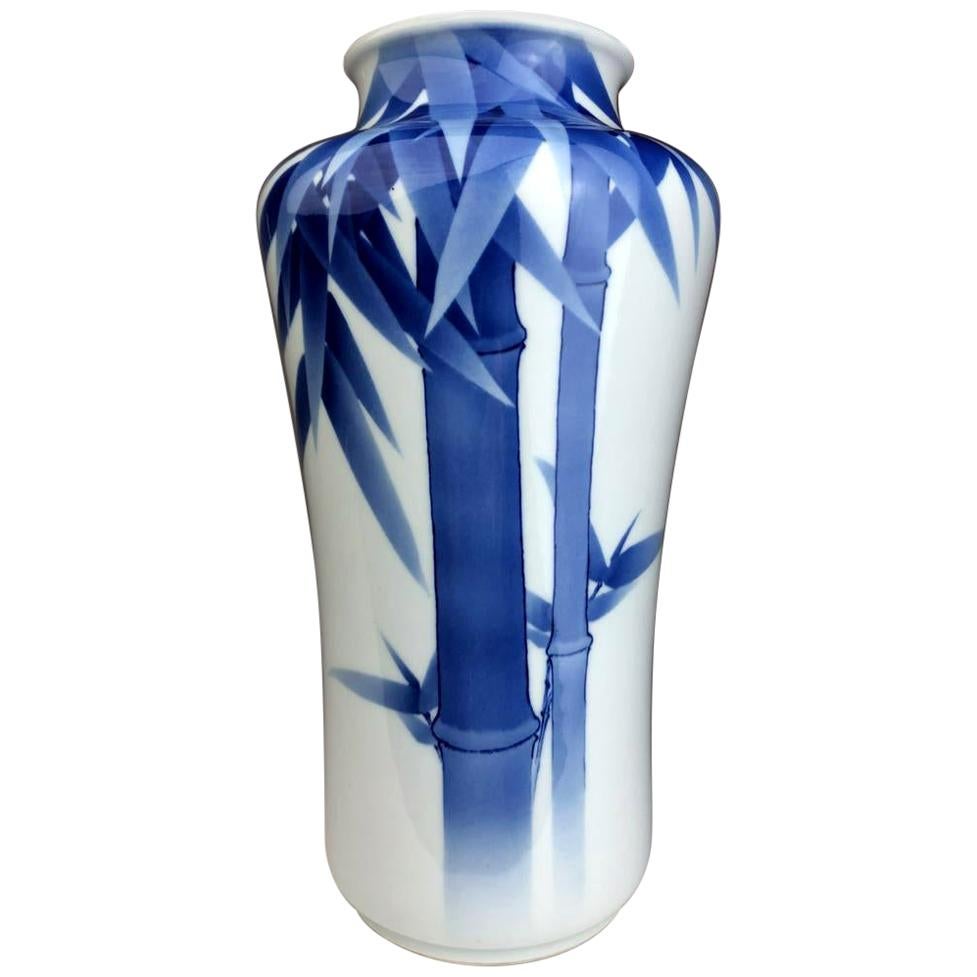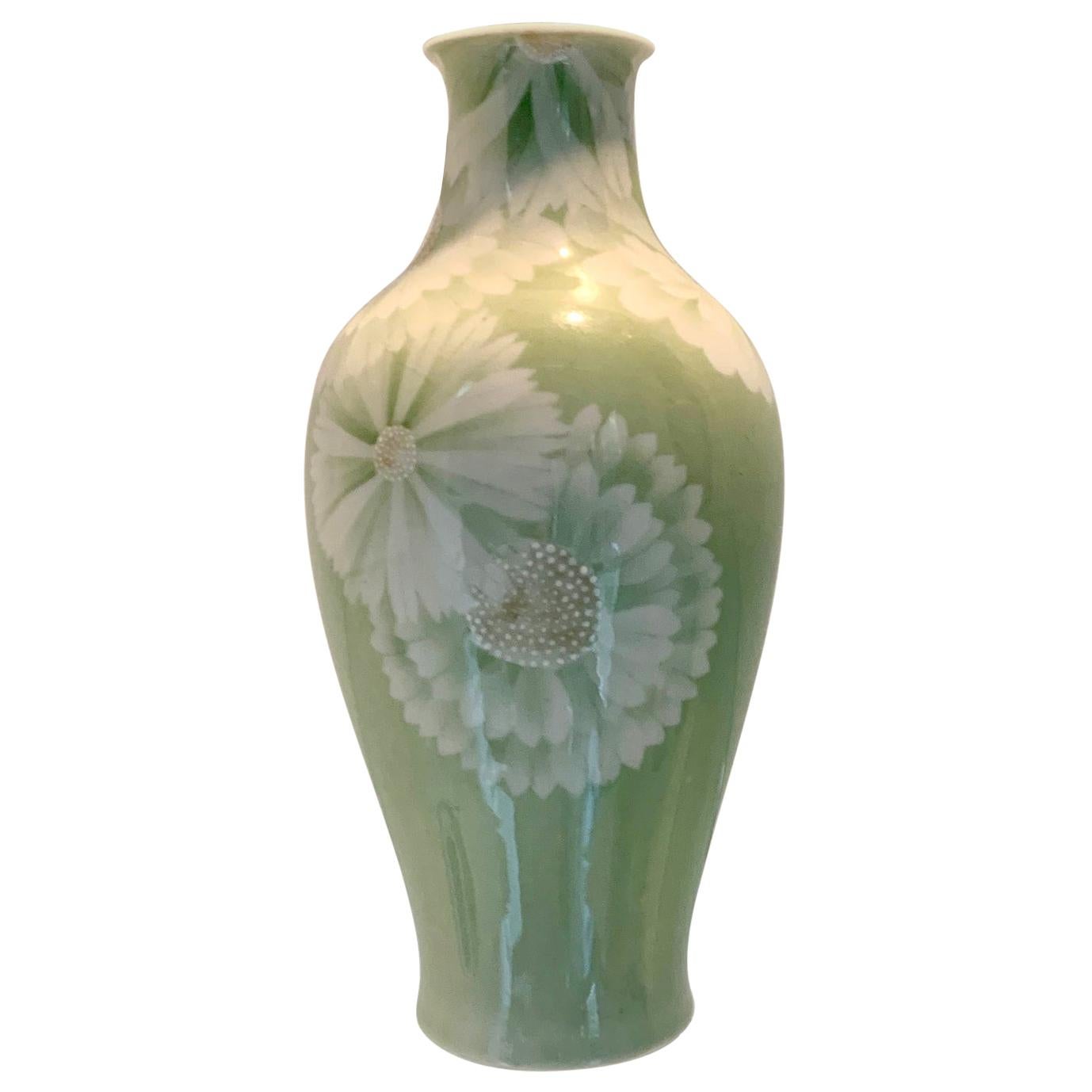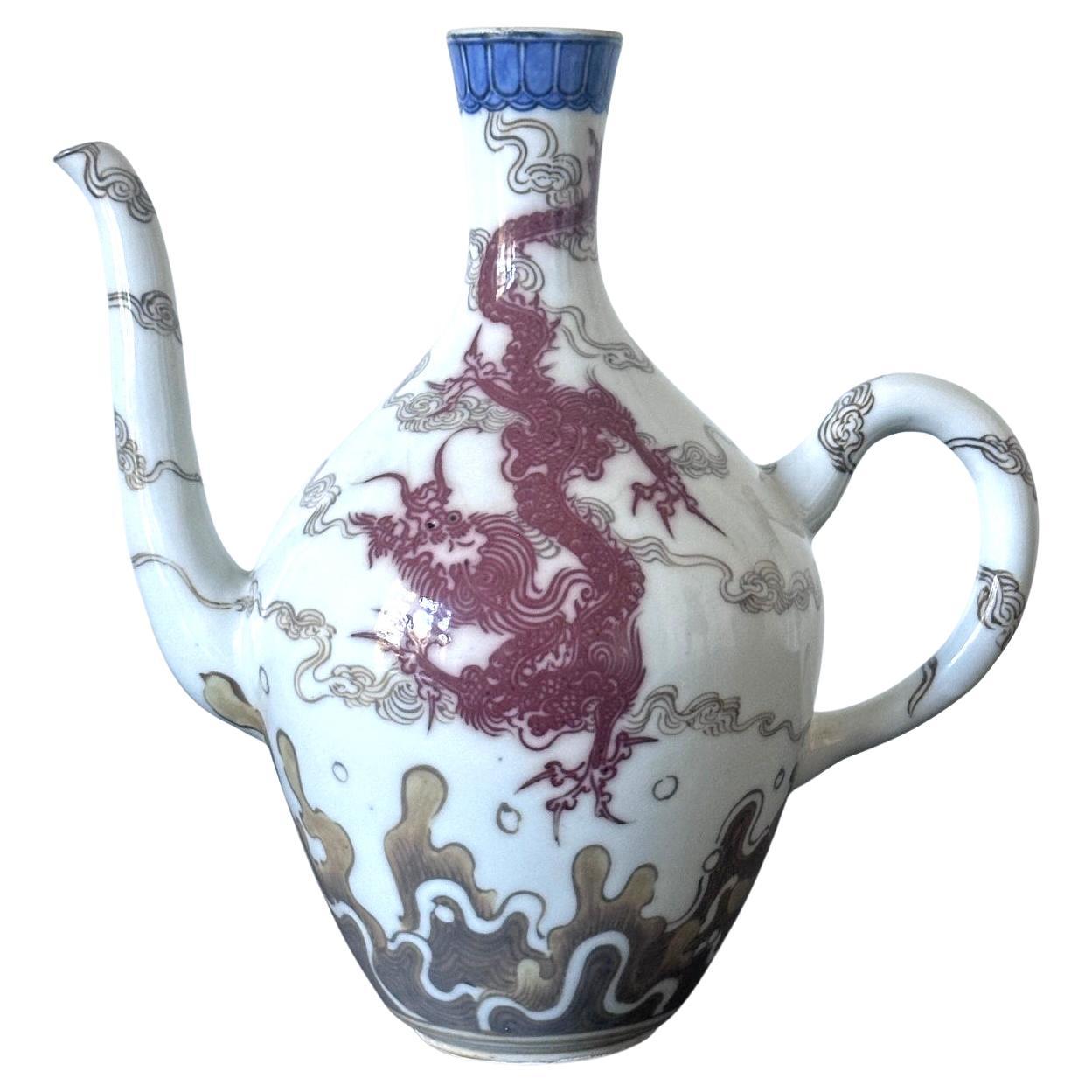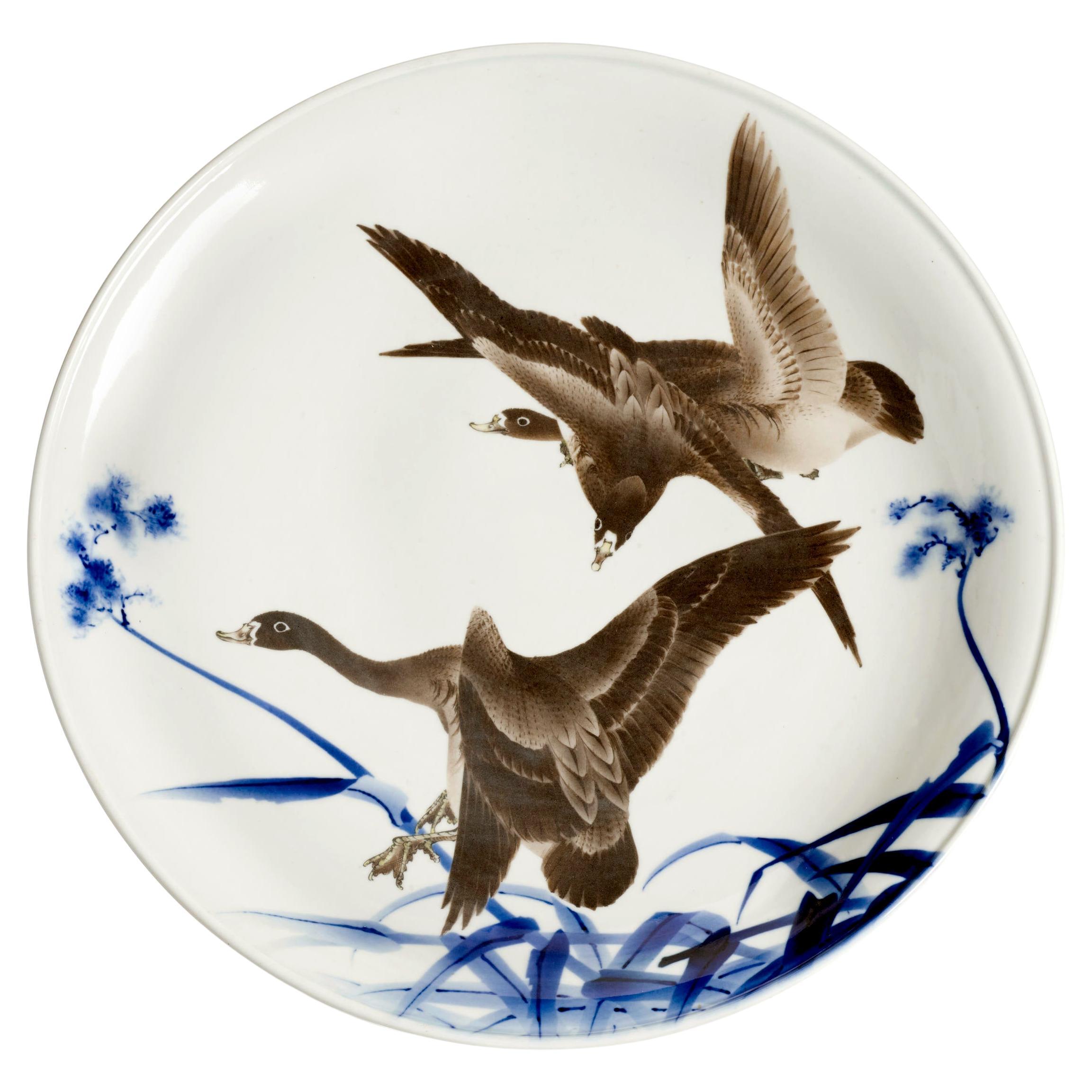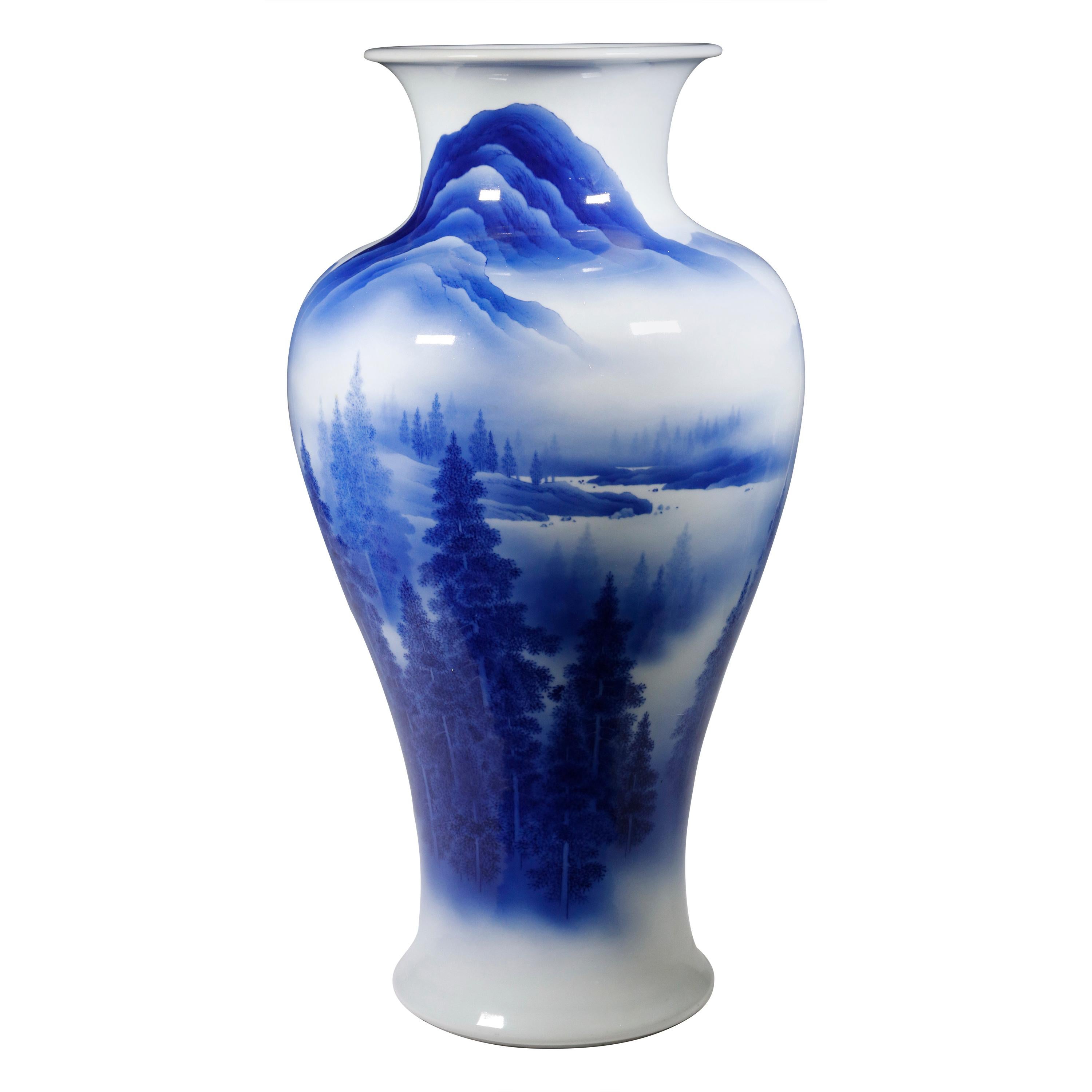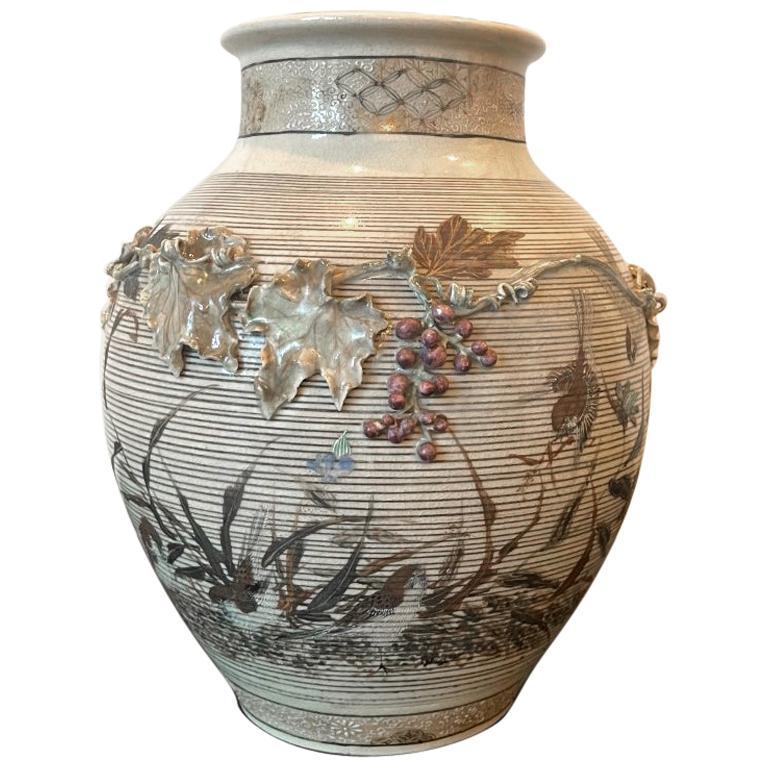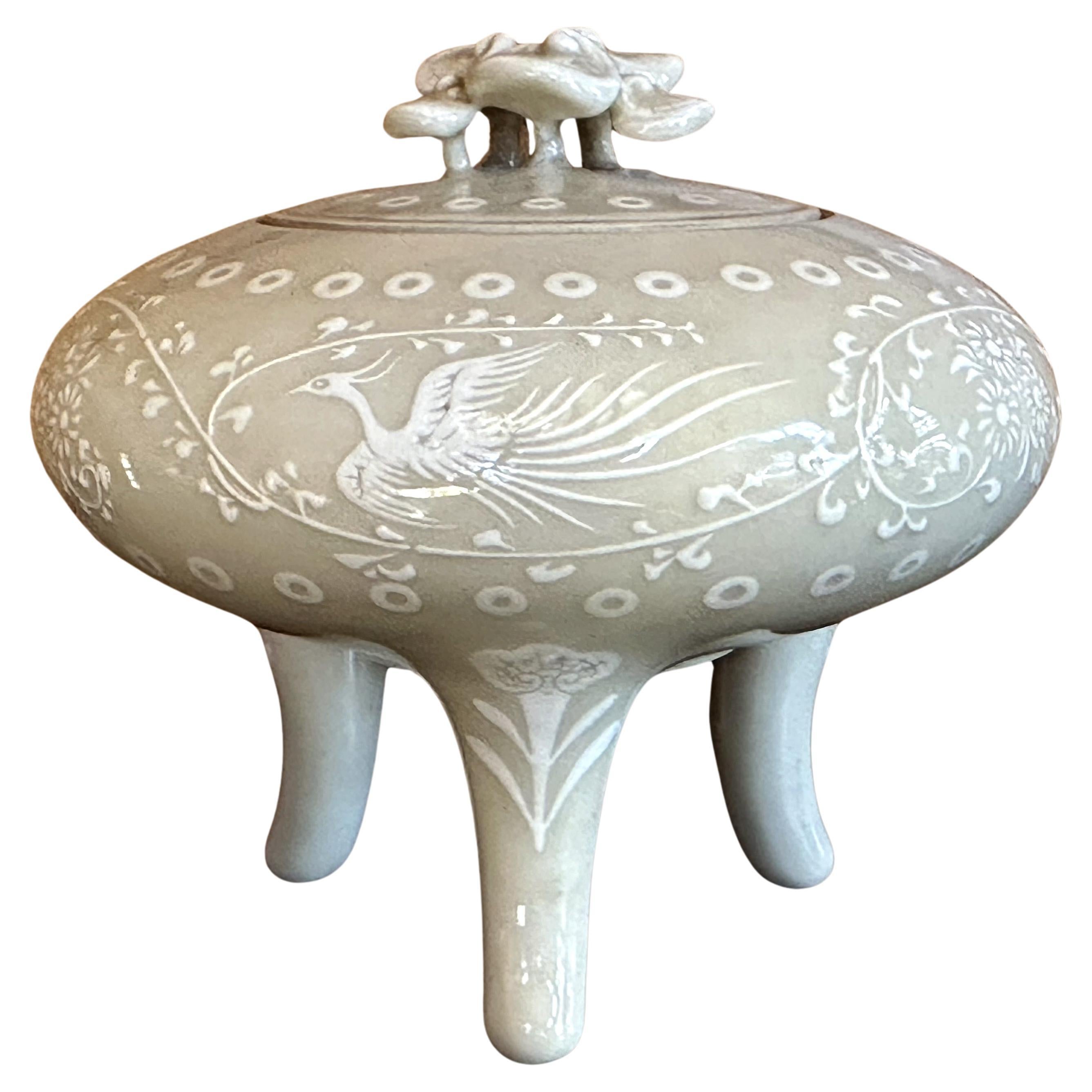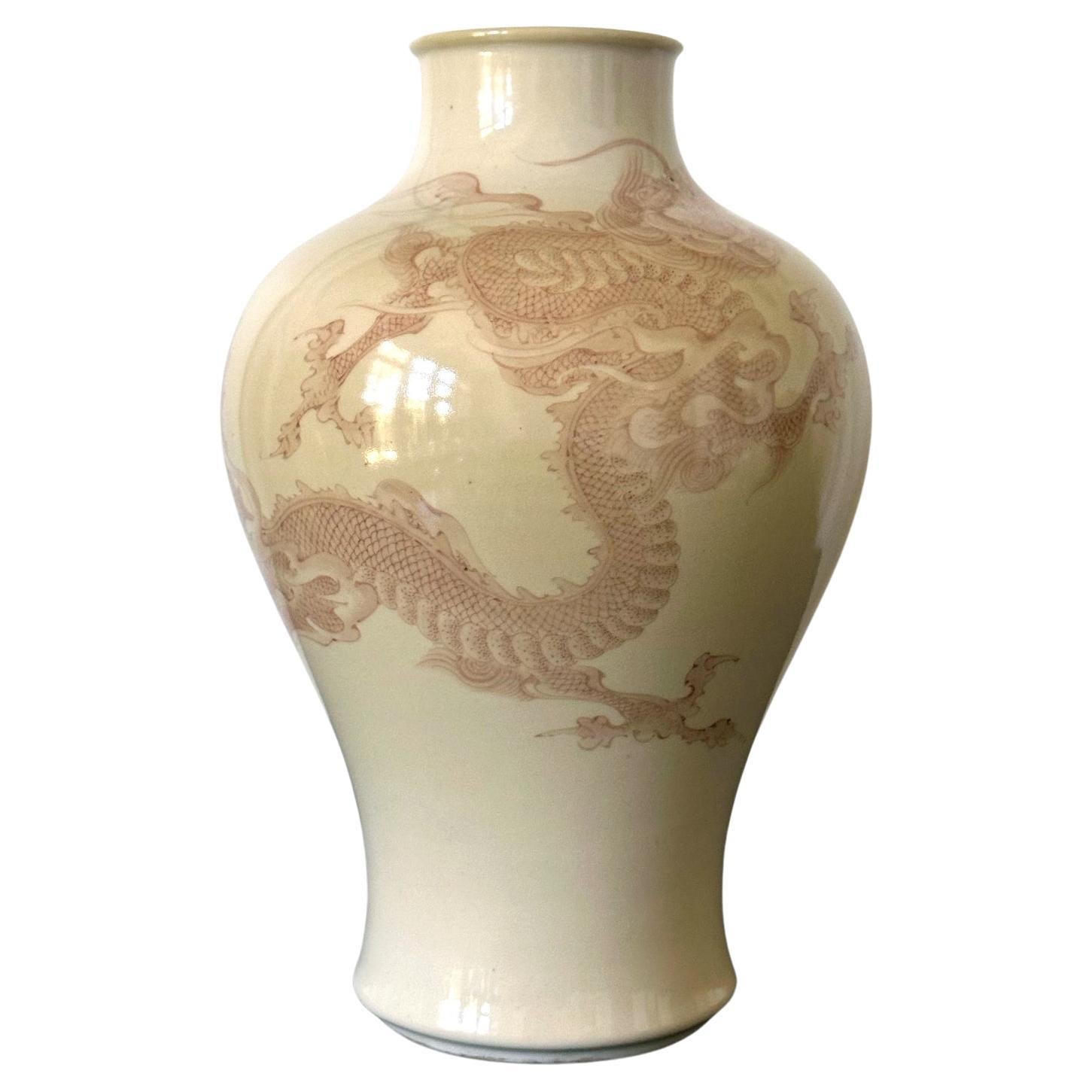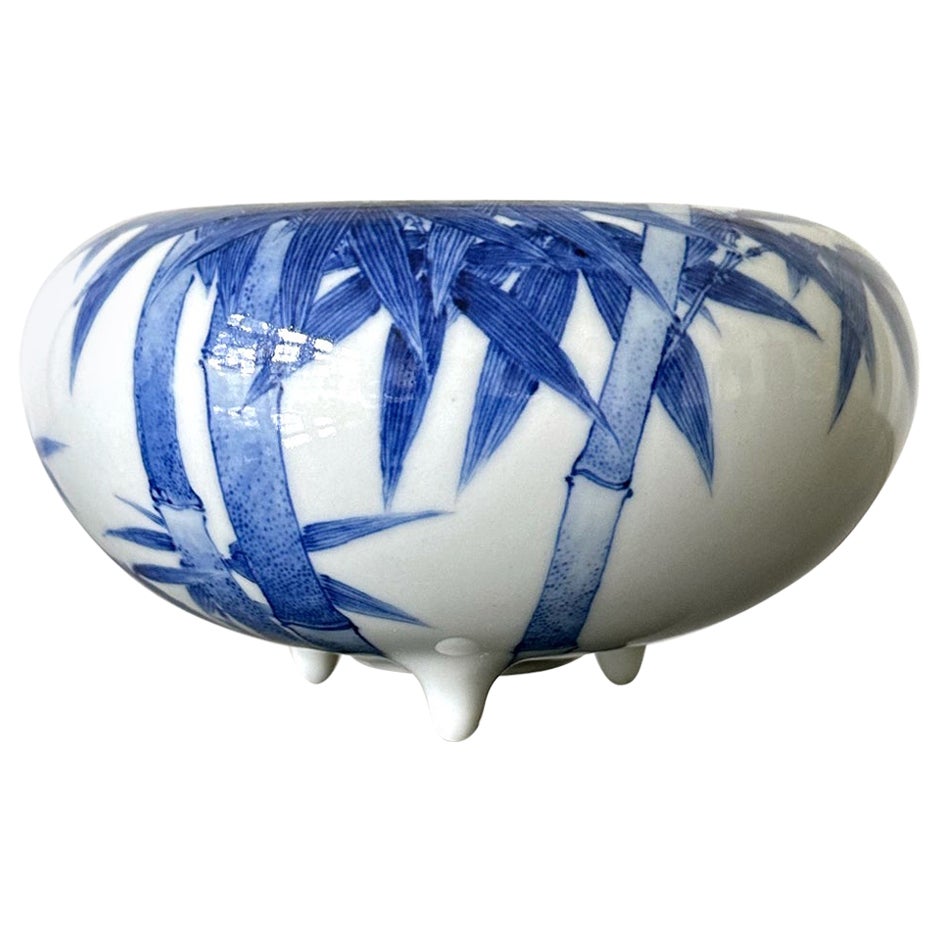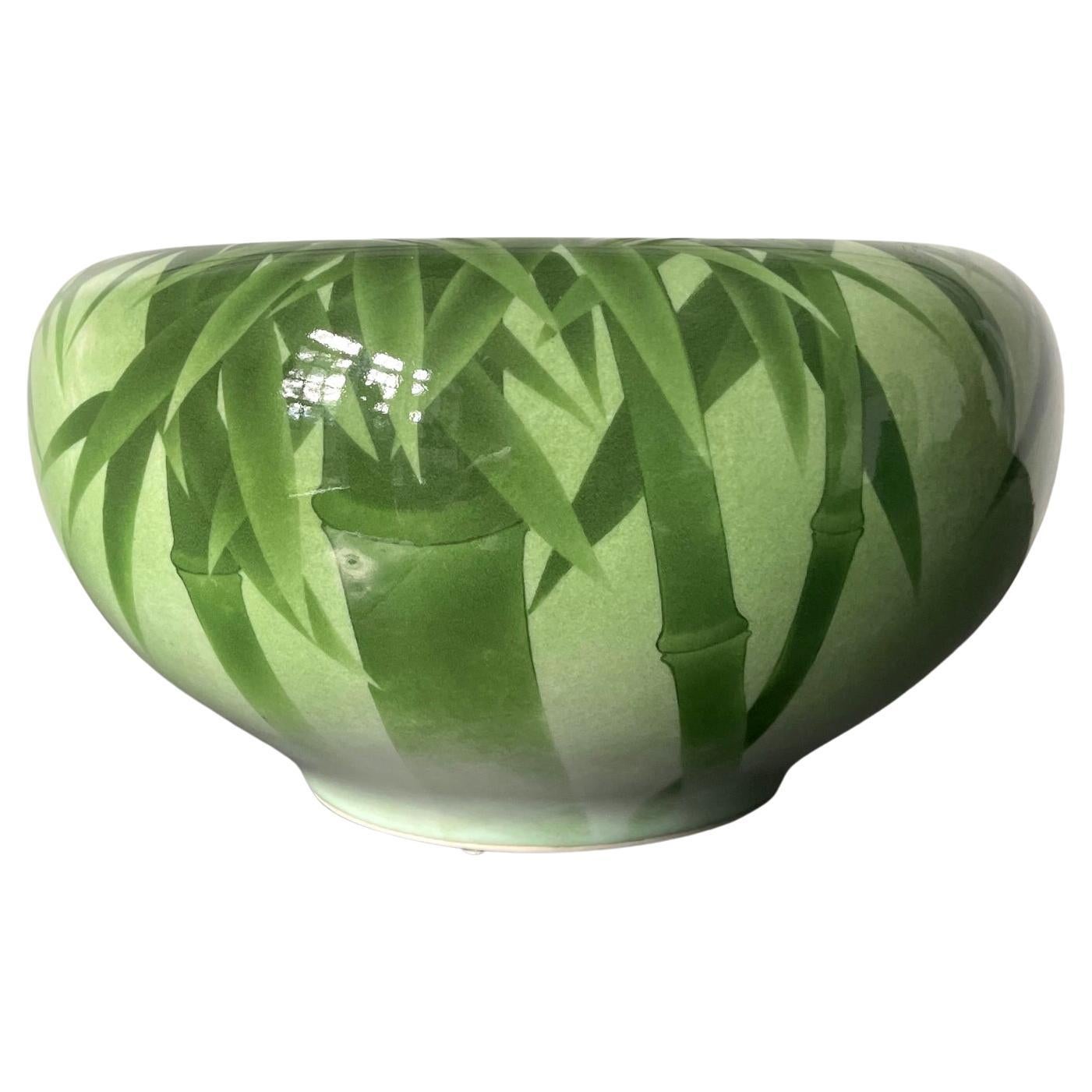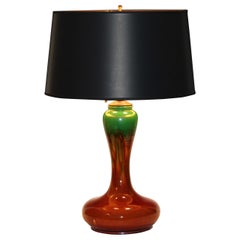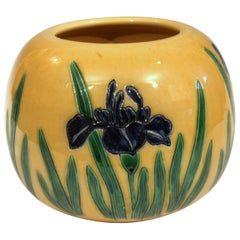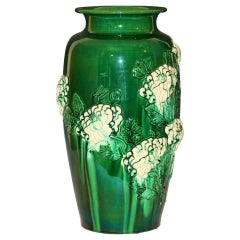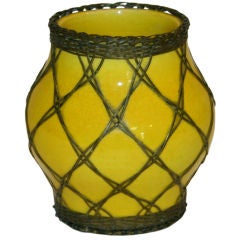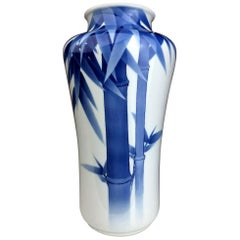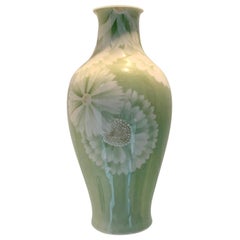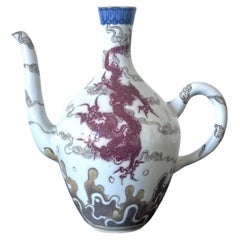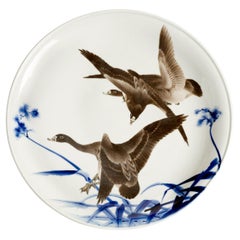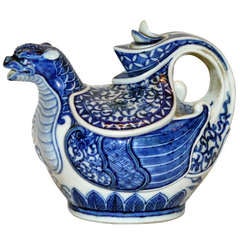
Makuzu Kozan Antique Japanese Studio Porcelain Ewer
View Similar Items
Want more images or videos?
Request additional images or videos from the seller
1 of 11
Makuzu Kozan Antique Japanese Studio Porcelain Ewer
About the Item
- Creator:Makuzu Kozan (Workshop/Studio)
- Dimensions:Height: 5.5 in (13.97 cm)Width: 6.63 in (16.85 cm)Depth: 4.38 in (11.13 cm)
- Style:Art Nouveau (Of the Period)
- Materials and Techniques:
- Place of Origin:
- Period:
- Date of Manufacture:Circa 1890
- Condition:Excellent condition, no damage or repair, no lines, no chips, no flakes, no nibbles.
- Seller Location:Wilton, CT
- Reference Number:1stDibs: LU8564835889
About the Seller
5.0
Recognized Seller
These prestigious sellers are industry leaders and represent the highest echelon for item quality and design.
1stDibs seller since 2008
253 sales on 1stDibs
Typical response time: 3 hours
Associations
The Art and Antique Dealers League of AmericaAntiques Associations Members
Authenticity Guarantee
In the unlikely event there’s an issue with an item’s authenticity, contact us within 1 year for a full refund. DetailsMoney-Back Guarantee
If your item is not as described, is damaged in transit, or does not arrive, contact us within 7 days for a full refund. Details24-Hour Cancellation
You have a 24-hour grace period in which to reconsider your purchase, with no questions asked.Vetted Professional Sellers
Our world-class sellers must adhere to strict standards for service and quality, maintaining the integrity of our listings.Price-Match Guarantee
If you find that a seller listed the same item for a lower price elsewhere, we’ll match it.Trusted Global Delivery
Our best-in-class carrier network provides specialized shipping options worldwide, including custom delivery.More From This Seller
View AllAntique Japanese Awaji Pottery Organic Art Nouveau Gourd Form Lamp
By Awaji Pottery
Located in Wilton, CT
Awaji Pottery lamp in sensual gourd form with green over caramel glaze, circa 1910s. Good quality double cluster S-form socket. 29" high overall, 18" to top of cap, 7 1/2" diameter. ...
Category
Vintage 1910s Japanese Art Nouveau Table Lamps
Materials
Pottery
Large Tanabe-Awaji Pottery Japanese Incised Iris Signed Jardinière Bowl Vase
By Awaji Pottery
Located in Wilton, CT
Tanabe-Awaji Japanese Studio Pottery vase with three incised iris vignettes, circa 1920s. Measures: 9" high, 10" diameter. Impressed mark ...
Category
Early 20th Century Japanese Art Nouveau Vases
Materials
Pottery
Large Japanese Awaji Pottery Chrysanthemum Vase
By Awaji Pottery
Located in Wilton, CT
Large Awaji pottery vase with sprigged chrysanthemums and green and white glazes, circa 1930. Measures: 18 1/4" high, 9 1/2" diameter. Excellent condition.
Category
Vintage 1930s Japanese Arts and Crafts Ceramics
Materials
Pottery
Awaji Pottery Japanese Scholar's Desk Yellow Brush Pot/Pencil Cup Bronze Weave
By Awaji Pottery
Located in Wilton, CT
Awaji Pottery brushpot/pencil cup in sunny yellow glaze with bronze weaving. Sumoto kiln. 5" high, 3 1/2" diameter. Impressed export and kiln marks. Excelle...
Category
Early 20th Century Japanese Arts and Crafts Ceramics
Materials
Pottery
Large Antique Japanese Carved Studio Porcelain Yellow Covered Urn Vase
By Japanese Studio
Located in Wilton, CT
Large Japanese studio porcelain covered vase with finely carved decoration of birds amidst foliage set against a cheerful yellow ground, circa 1910. Measures: 18 1/2" high, 11 1...
Category
Vintage 1910s Japanese Anglo-Japanese Urns
Materials
Porcelain
$1,900 Sale Price
29% Off
Large Art Nouveau Awaji Pottery Ruffle Rim Trumpet Form Vase
By Awaji Pottery
Located in Wilton, CT
Large Awaji vase in trumpet form with wavy rim and dark green glaze, circa 1910. 30" high, 13" diameter. Excellent condition, two small chips under lip repaired, slight lean, as shown.
Category
Early 20th Century Japanese Art Nouveau Ceramics
Materials
Pottery
You May Also Like
Japanese Porcelain Vase Makuzu Kozan Meiji Period
By Makuzu Kozan
Located in Atlanta, GA
A striking blue and white vase from the studio of Japanese Potter Makuzu Kozan, also known as Miyagawa Kozan (1842–1916), one of the most established and collected ceramist from Meiji Period. Born as Miyagawa Toranosuke, Kozan established his pottery studio in Yokohama circa 1870s and later became one of the appointed artists to the Japanese Imperial household. His work was exhibited in many international fairs that the Meiji government participated at the turn of the century and won many grand prizes.
Of a relatively large size, this vase is decorated with underglaze cobalt blue using the novel technique developed by Kozan called Fuki-e (the blow painting). As a result, the bamboos appear took on a three-dimensional quality as if appearing in a mist. Known as one of the most creative ceramists, circa 1887, Kozan started experimenting with new chemical colors from the West in the format of his porcelain glaze. New colors allowed him to create underglaze design that appeared bright, smooth and glossy. He even invented his own receipt of cobalt blue to achieve a much brighter yet softer shade, as evident on this vase. To create landscape that is realistic and dimensional, more common in the western paintings, he was inspired by the native Japanese ink painting technique developed around 1900 by Yokoyama Taikan...
Category
Antique Early 1900s Japanese Japonisme Ceramics
Materials
Ceramic
Japanese Porcelain Vase Meiji Period Makuzu Kozan
By Makuzu Kozan
Located in Atlanta, GA
A finely decorated and glazed Japanese porcelain vase by Makuzu Kozan (1842-1916) circa 1900s Meiji Period. The vase is of a classic bottle form with baluster body and short neck. It was decorated with underglaze white magnolia blossom on a pleasant celadon background. The stamens of the flower were artistically rendered in a low relief, giving the design a realistic appeal with the dimension.
Miyagawa Kozan...
Category
Early 20th Century Japanese Meiji Ceramics
Materials
Porcelain
Early Porcelain Underglaze Dragon Ewer by Makuzu Kozan Meiji Period
By Makuzu Kozan
Located in Atlanta, GA
A porcelain ewer with fine underglaze iron red, brown and blue decoration made by the legendary Japanese imperial potter Makuzu Kozan (1842-1916), this relatively rare piece is dated to circa Meiji 23rd to 26th year (1890-1893) based on the mark used on the base. This is the starting period when the artists departed from his high-relief and gold gilt period and started focusing on making porcelain pieces with underglaze paint and experimented new colors. The ewer form is also relatively rare in the artist's survived repertoire compared to other forms.
The piece takes its shape from the prototype Chinese...
Category
Antique 1890s Japanese Meiji Ceramics
Materials
Ceramic
Rare Large Japanese Porcelain Presentation Plate Makuzu Kozan
By Makuzu Kozan
Located in Atlanta, GA
A large presentation plate with striking pictorial design from the studio of Japanese Potter Makuzu Kozan. Also known as Miyagawa Kozan (1842–1916),...
Category
Early 20th Century Japanese Meiji Ceramics
Materials
Porcelain
Rare Japanese Porcelain Painted Footed Dish Makuzu Kozan
By Makuzu Kozan
Located in Atlanta, GA
A rare footed dish in the form of an open scroll painting with literati landscape from the studio of Japanese Potter Makuzu Kozan. Also known as Miyagawa Kozan (1842–1916), Makuzu wa...
Category
Antique Early 1900s Japanese Meiji Ceramics
Materials
Porcelain
Rare and Large Japanese Porcelain Vase Makuzu Kozan
By Makuzu Kozan
Located in Atlanta, GA
A striking blue and white vase from the studio of Japanese Potter Makuzu Kozan, also known as Miyagawa Kozan (1842–1916), one of the most established and collected ceramist from Meiji Period. Born as Miyagawa Toranosuke, Kozan established his pottery studio in Yokohama around 1870s and later became one of the appointed artist to the Japanese Imperial household. His work was exhibited in many international fairs that the Meiji government participated at the turn of the century and won many grand prizes.
With an impressively large size, this vase was likely made and reserved as a presentation piece for one of the many expositions the studio participated in the early 20th century. It was decorated with underglaze cobalt blue using the novel technique developed by Kozan called Fuki-e (the blow painting), in order to achieve the striking dimensional literary landscape known as "Mountain and Water". Being one of the most creative ceramists, Kozan started experimenting with new chemical colors from the West in the format of his porcelain glaze around 1880s. New colors allowed him to create underglaze designs that appeared bright, smooth and glossy. He even invented his own receipt of cobalt blue to achieve a much brighter yet softer shade, as evident on this vase. To create landscape that is realistic and dimensional, more common in the western paintings, he was inspired by the native Japanese ink painting technique developed around 1900 by Yokoyama Taikan...
Category
Early 20th Century Japanese Japonisme Ceramics
Materials
Porcelain
